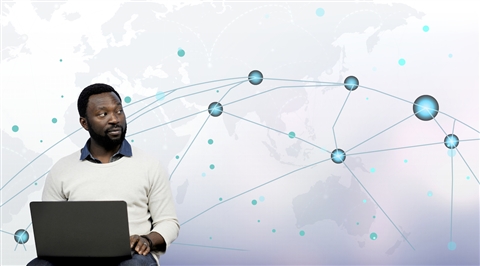
Technology photo created by rawpixel.com – www.freepik.com
Modern IT systems present complex and interconnected frameworks on which organizations rely to provide business insight and to protect their intellectual capital. Many enterprises employ a combination of on-premises systems, remote corporate locations, and cloud instances to run their company. This can present a challenging environment in which to measure the performance of the various system components.
The decentralization of enterprise IT has greatly complicated the task of maintaining security throughout the systems and applications on which your business depends. Each cloud instance or new remote office can potentially be an entry point for unauthorized access to your valuable data. The rise in the use of open-source software also introduces possible security flaws buried deep within applications.
It can be difficult to identify where the responsibility for security lies when using multiple cloud solutions and providers. Depending on the cloud service model employed, the customer and provider have a varying degree of liability in the event of a security breach. Even if your cloud provider is responsible for a certain aspect of system security, it never hurts to perform your own monitoring to ensure that they are fulfilling their commitments. In the end, it’s your data at risk.
Why Should I Monitor My Systems?
There are multiple insights that can be gained by monitoring your systems and applications. You can certainly use the data generated by the monitoring process to tune your applications to achieve better performance. There is a very good chance that there are a number of improvements you can make to your application’s response time by carefully studying the results.
Perhaps the most important reason to perform extensive monitoring is to discover security vulnerabilities. Many security issues can initially be detected by noticing unusual activity that is impacting one or more of your applications. The beginnings of a security breach may come from an unsuspecting source. Excessive queries on a database may be the signs of attempts to gain unauthorized access to sensitive data.
While some security vulnerabilities are exploited by employees or others who have legitimate access to your systems, the majority of attacks come from outside your organization. This means that the intruders must gain access through your network. The importance of monitoring your network to proactively prevent security breaches cannot be overstated.
Statistics indicate that 38% of targeted attacks were directed at the U.S. from 2015 to 2017. The amount of corporate and consumer data stored in the U.S. is expected to make the country accountable for 50% of data breaches by 2023. Still skeptical about the need for monitoring your IT environment?
What Should be Monitored?
The simple answer to this question is that you should monitor everything if at all possible. You may find issues through the process of monitoring that would not have been evident otherwise. There are some areas of an IT environment which demand more attention from a monitoring perspective due to the potential that by being compromised they can be used for nefarious means.
One of the most obvious choices for focusing your monitoring efforts is your network. Here is an instance where the decentralized framework employed by many enterprises can pose substantial challenges. Network devices may be spread throughout the world, be manufactured by various vendors, and run on multiple platforms. Identifying suspicious behaviors using the amalgam of vendor-specific tools can quickly become unwieldy and result in an incomplete picture of the network landscape.
Single-Pane Monitoring
The ability to monitor your entire IT environment from one interface can be instrumental in maintaining peak performance. Being able to observe all of your IT resources through a single pane of glass provides an exponentially better means of ensuring your systems are secure and performing at peak efficiency. It enables a single technician or team to effectively monitor all of your servers, applications, network devices, and virtual machines.
Uptime Infrastructure Monitor is a comprehensive monitoring tool for enterprise installations that provides a unified view of your IT resources. It monitors your network and applications as well as your system’s physical and virtualization performance in a single interface. All of your resources including on-premises, remote, and cloud are incorporated into the information available with this application. The tool also allows you to set automatic alerts and escalation policies and to generate custom reports and dashboards.
I strongly recommend that if you are not already monitoring your systems to identify potential security and performance issues, you begin as soon as possible. Using a tool that offers the features and single-pane interface such as Uptime Infrastructure Monitor is a great place to start.